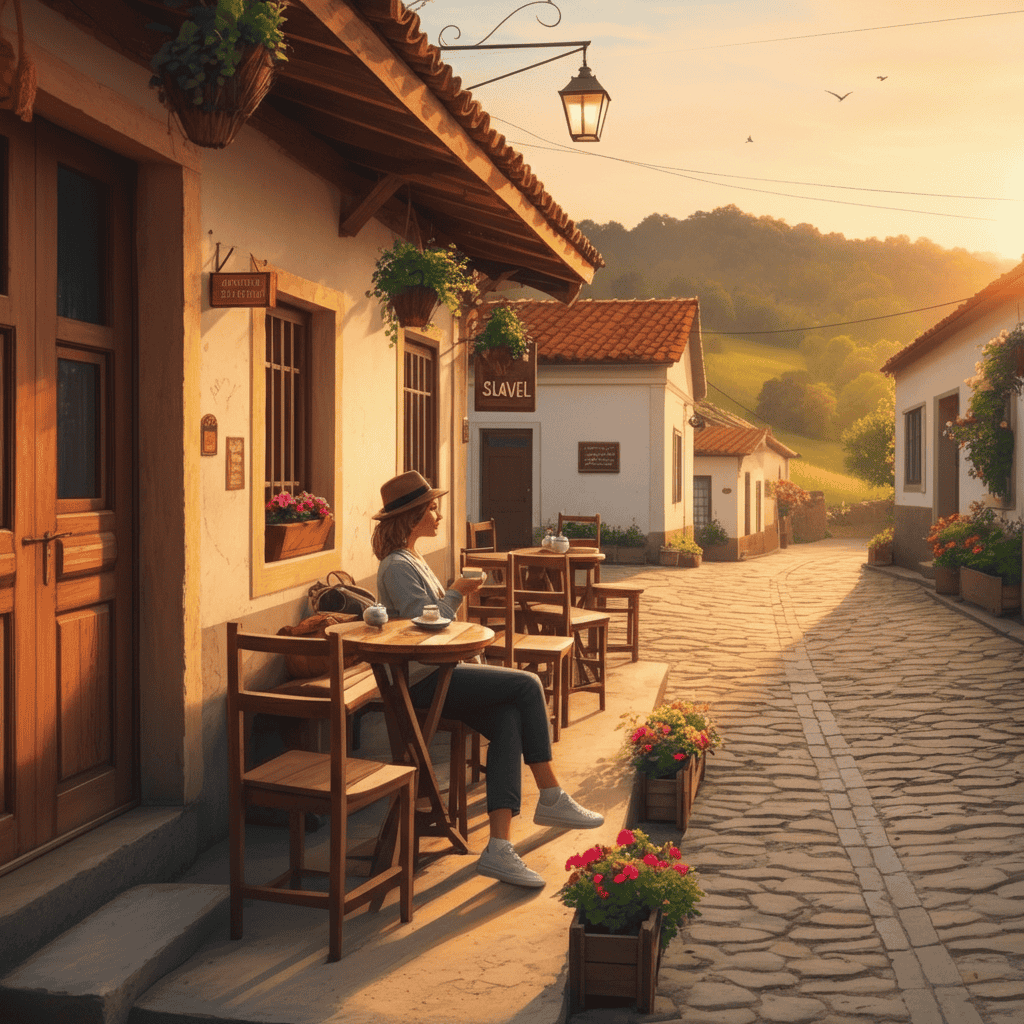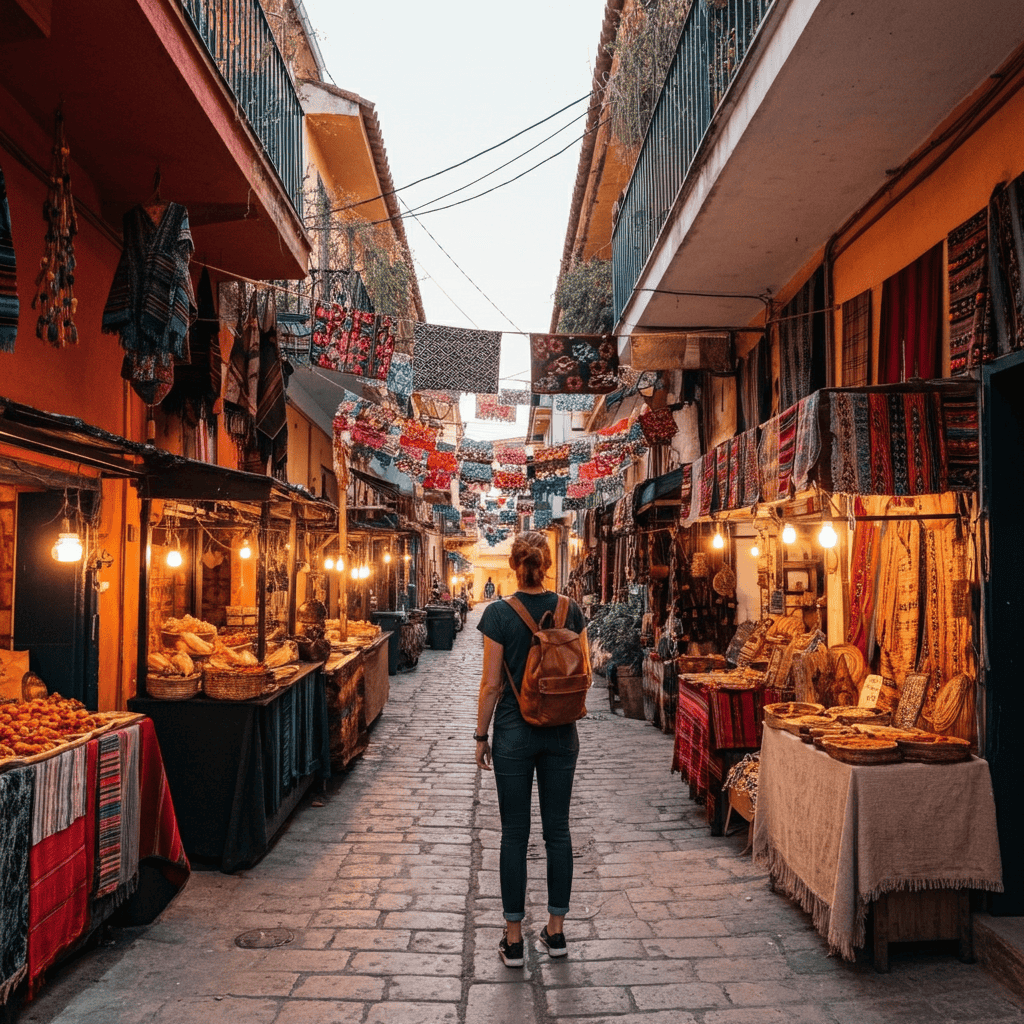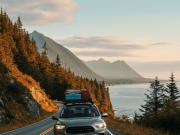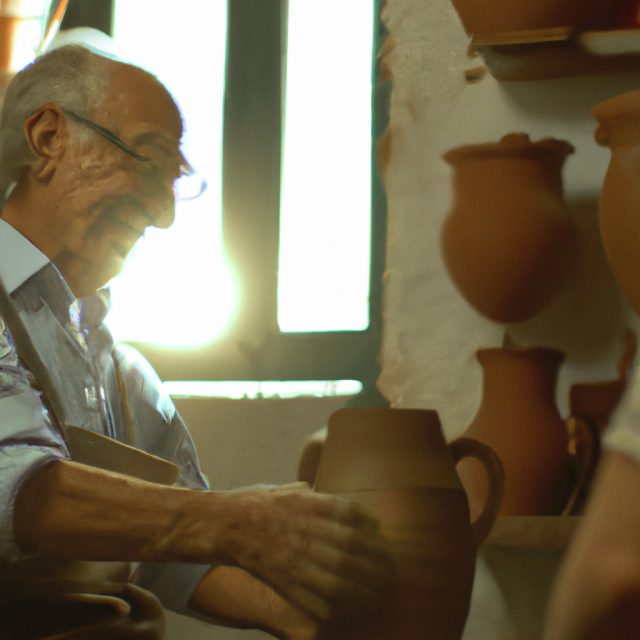Are You a Tourist or a Traveler?
You’ve seen the pictures: the same iconic landmarks, the same crowded squares, the same selfie poses replicated a million times over. You’ve followed the guides that lead you down a well-trodden path, a carefully curated experience designed for mass consumption. But as you stand there, ticking another item off the bucket list, a question might linger: Is this it? Is this truly experiencing a new place?
For many, the answer is a resounding no. The modern traveler craves something more profound, more genuine. We yearn for the unplanned detours, the serendipitous encounters, the taste of a dish not found in any guidebook, and the quiet moments of connection that bridge cultural divides. We want to move beyond the surface-level spectacle and dive into the vibrant, beating heart of a destination. In short, we want to transform from mere tourists into true travelers.
This guide is your roadmap to making that transformation. Forget the tourist traps and the overpriced souvenirs. We are about to embark on a journey to uncover the soul of a place. We’ll explore the mindset, strategies, and tools you need to step off the beaten path and discover the authentic, local experiences that create lifelong memories. This is your ultimate guide to finding the hidden gems and local secrets that will redefine the way you see the world.
The Mindset Shift: From Spectator to Participant
The foundation of authentic travel isn’t a secret app or a hidden map; it’s a fundamental shift in perspective. It’s about changing how you approach your journey, moving from a passive spectator to an active, engaged participant in the world around you.
Embrace the Philosophy of Slow Travel

In our fast-paced world, we’re conditioned to maximize efficiency. We try to cram as many cities and sights into a single trip as possible, resulting in a blur of train stations and hotel check-ins. Slow travel is the antidote. It’s the conscious decision to explore a single region or city more deeply, rather than skimming the surface of many. It means prioritizing quality of experience over quantity of destinations.
Instead of a whirlwind tour of five European capitals in ten days, consider spending all ten days exploring the countryside of Tuscany, renting a small car, and getting lost on purpose. This approach allows for spontaneity. You’ll have time to linger in a café, strike up a conversation with a shopkeeper, or take an impromptu hike you spotted on a local map. Slow travel creates the space necessary for authentic moments to happen.
Cultivate Unshakeable Curiosity
The greatest tool in a traveler’s arsenal is genuine curiosity. Ask questions. Wonder about the story behind a building, the ingredients in a local dish, or the meaning of a regional custom. When you approach a new place with a ‘why’ and a ‘how’ instead of just a ‘what,’ you unlock a deeper layer of understanding.
Talk to people whenever you can—your guesthouse owner, the taxi driver, the person sitting next to you on a bus. Ask for their recommendations. “Where do you go for the best coffee?” or “What’s your favorite thing to do on a Sunday?” These simple questions can lead you to incredible, off-the-grid experiences that no travel blog could ever list.
Be Open, Flexible, and Ready for Imperfection
Authentic travel is rarely seamless. The best-laid plans will go awry. Buses will be late, restaurants will be closed, and language barriers will lead to comical misunderstandings. The key is to embrace this imperfection. These are not failures; they are part of the adventure. Some of the most memorable travel stories are born from things going ‘wrong.’ A missed train might lead you to discover a charming village you never intended to visit. A communication mix-up could result in you trying a bizarre but delicious new food. Let go of the need for a perfect, Instagram-curated itinerary and allow the journey to unfold organically.
Pre-Trip Planning: Laying the Groundwork for Discovery
While spontaneity is crucial, a little strategic planning can significantly increase your chances of having an authentic experience. The goal isn’t to create a rigid schedule, but to build a framework of knowledge that empowers you to make better choices on the ground.
Dig Deeper Than the ‘Top 10’ Lists
Standard travel guides and popular blogs are a great starting point, but they often cater to the mainstream. To find the real gems, you need to dig deeper. Dive into travel forums like Reddit’s r/solotravel or specific country subreddits where you can ask direct questions to locals and seasoned travelers. Search for blogs written by expats living in your destination city—they often have the best insider knowledge. Look up local event calendars or alternative city magazines online to see what’s happening during your visit, from neighborhood festivals to farmers’ markets.
Choose Your Accommodation Wisely
Where you sleep can dramatically shape your trip. While large, all-inclusive resorts offer comfort, they also create a bubble that insulates you from the local culture. Consider these alternatives:
- Homestays or Guesthouses: Staying with a local family or in a small, family-run guesthouse provides an unparalleled opportunity for cultural exchange. You’ll get firsthand recommendations and often a home-cooked breakfast.
- Boutique Hotels: Smaller, locally-owned hotels often have a stronger connection to the community and can offer more personalized advice than international chains.
- Apartment Rentals (in local neighborhoods): Renting an apartment in a residential area, away from the tourist center, allows you to experience the daily rhythm of a place. You’ll shop at the local market, find the neighborhood bakery, and feel less like a visitor and more like a temporary resident.
Learn a Few Key Phrases
You don’t need to be fluent, but learning a handful of basic phrases in the local language is a massive sign of respect. “Hello,” “Goodbye,” “Please,” “Thank you,” and “Excuse me” are the essentials. The effort, no matter how clumsy your pronunciation, is almost always appreciated. It breaks down barriers and can turn a transactional encounter into a friendly interaction. It shows you see their culture as something to engage with, not just consume.
On the Ground: Tactics for Uncovering Local Secrets
You’ve arrived with the right mindset and a solid foundation of research. Now, it’s time to immerse yourself. Here are proven strategies for finding those coveted authentic experiences.
Follow Your Stomach to the Source
Food is the gateway to culture. To find the best local food, avoid the restaurants with glossy, multi-language menus and a host trying to lure you in from the street. Instead, look for these signs:
- The ‘No English’ Menu: A menu written only in the local language is a fantastic sign. Pull out your translation app and take a chance!
- A Line of Locals: If you see a queue of local workers at a food stall or a small eatery during lunchtime, get in that line. Whatever they’re serving is likely to be delicious, authentic, and affordable.
- Location, Location, Location: Walk three or four blocks away from the main tourist square or landmark. The quality of food often increases exponentially as the prices drop.
Master Local Transportation
Taxis and tourist shuttles are convenient, but they shield you from the everyday life of a city. Riding the local bus, subway, or tram is an experience in itself. It’s a chance to observe people, understand the city’s layout, and it will almost certainly take you to neighborhoods you wouldn’t have seen otherwise. It might be confusing at first, but figuring it out is a small victory that builds confidence and connection.
Explore Local Markets

Markets are the vibrant, chaotic heart of a community. Don’t just go to the souvenir markets. Seek out the local food markets where residents do their daily shopping. Arrive early in the morning to see them at their busiest. The sights, sounds, and smells are a sensory feast. It’s a place for observation—watch how people interact, what produce is in season, and what local delicacies are being sold. It’s a microcosm of the local culture, all in one place.
Embrace the Art of Getting Lost
Pick a promising-looking residential neighborhood on the map, put your phone away, and just walk. The goal is to wander without a specific destination. This is how you stumble upon hidden courtyards, tiny artisan workshops, charming local parks, and the best street art. Allow your curiosity to be your compass. Of course, always be mindful of your safety—do this during the day and be aware of your surroundings—but a little aimless exploration can yield the biggest rewards.
Leveraging Technology for Deeper Connection
While it may seem counterintuitive, technology can be a powerful ally in your quest for authenticity, as long as you use it as a tool for connection, not a screen for distraction.
Apps That Bridge the Gap
- Google Translate: The conversation mode feature is a game-changer, allowing for real-time, two-way conversations that can break down even the most daunting language barriers.
- Eatwith: This platform connects travelers with local hosts for authentic dining experiences, from home-cooked dinners to cooking classes.
- Meetup: Check for local groups related to your hobbies—be it hiking, board games, or language exchange. It’s an instant way to meet locals with shared interests.
- Maps.me: This offline map application is essential for navigating without a data connection, empowering you to wander freely without fear of truly getting lost.
Using Social Media Intelligently
Instead of just posting your own photos, use platforms like Instagram as a research tool. Search for geotags of your destination and look at the “Recent” tab, not just the “Top” posts. This shows you what people are doing in real-time, often revealing smaller cafes, street art, or events. Follow local bloggers, photographers, and chefs who live in the city for a constant stream of insider inspiration.
The Final Layer: Responsible and Respectful Travel
The pursuit of authentic experiences comes with a responsibility to be a good guest. True cultural immersion is a two-way street built on mutual respect.
Ask Before You Photograph
Remember that you are in someone else’s home, not a theme park. This is especially true when it comes to photographing people. A simple smile and a gesture towards your camera is all it takes to ask for permission. If they say no, respect their decision. A photograph is not worth violating someone’s privacy or making them feel like an exhibit.
Support the Local Economy Directly
Make a conscious effort to ensure your money benefits the local community. Eat at family-owned restaurants, buy souvenirs directly from the artisans who made them, and hire local guides. Avoid mass-produced trinkets and seek out unique, handcrafted items that tell a story about the place you’re visiting.
Be a Gracious Guest
Learn about local customs and etiquette. What is the tipping culture? How should you dress when visiting religious sites? Is it polite to bargain in the market, and if so, what is the respectful way to do it? A little research shows that you care about their culture and are making an effort to be a considerate visitor. This small effort fosters goodwill and opens doors to more genuine interactions.
Conclusion: Your Journey to Meaningful Travel Starts Now
Transforming from a tourist to a traveler is an ongoing practice, not a destination you arrive at. It’s about carrying a spirit of curiosity, respect, and openness with you wherever you go. It’s about understanding that the most profound travel moments are often not found in front of a famous monument, but in the shared laughter over a meal, the silent understanding with a local artisan, or the quiet beauty of an ordinary street corner at sunset.
By shifting your mindset, planning with intention, and engaging with the world around you in a mindful way, you unlock a richer, more meaningful way to travel. You will return home not just with photos, but with stories, not just with souvenirs, but with a deeper understanding of the world and your place in it. The path to authentic travel is open to you. The only question is, where will you let it take you first?
Learn more: Beyond the Tourist Trail: A Guide to Authentic Travel














